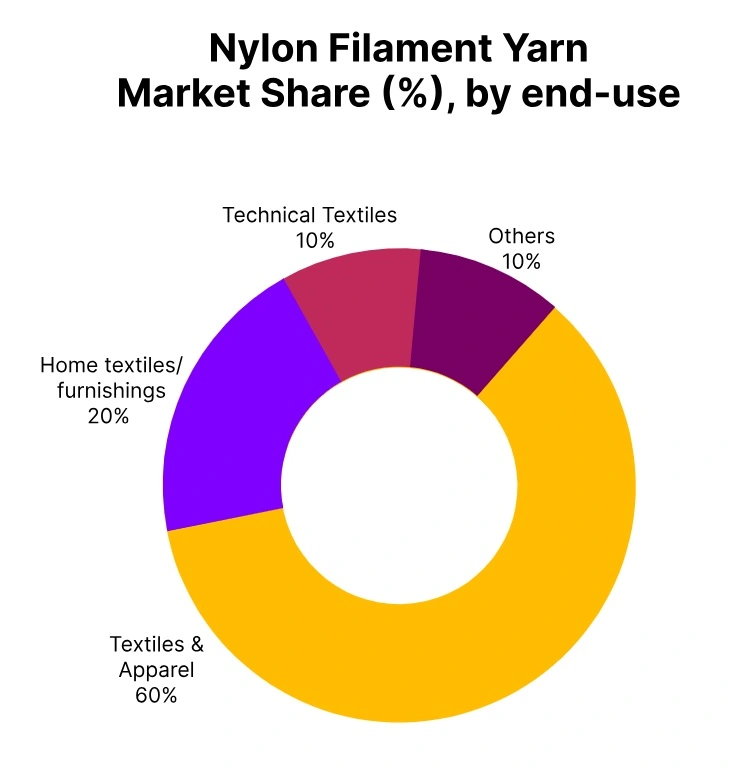Price-Watch’s most active coverage of Nylon Filament Yarn price assessment:
- POY 85D/24F Semi-dull Undyed FOB Shanghai, China
- POY 85D/24F Semi-dull Undyed CIF Nhava Sheva (China), India
- POY 85D/24F Semi-dull Undyed CIF Melbourne (China), Australia
- POY 85D/24F Semi-dull Undyed CIF Chittagong (China), Bangladesh
- POY 85D/24F Semi-dull Undyed CIF Aqaba (China), Jordan
- POY 85D/24F Semi-dull Undyed CIF Belgrade (China), Serbia
Nylon Filament Yarn (NFY) Price Trend Q3 2025
In Q3 2025, global Nylon Filament Yarn price trend moved decisively lower, decreasing by about 4–5% as textile and garment sector demand weakened alongside softer Caprolactam feedstock costs. Although product prices declined across the board, regional outcomes diverged due to changes in logistics costs, varied local consumption, and adaptive inventory practices. By September, competitive export activity, cautious procurement routines, and shifting freight rates maintained persistent pressure on the Nylon Filament Yarn (NFY) market, with most participants expecting subdued sentiment to linger into the next quarter.
China
Nylon Filament Yarn (NFY) Export prices FOB Shanghai, China, Grade- POY 85D/24F Semi-dull Undyed.
Nylon Filament Yarn prices in China exhibited a downward price trend in Q3 2025, easing by about 4% compared to Q2. According to Price-Watch, the Nylon Filament Yarn (NFY) price trend in China reflected ample availability from firms running at high operating rates, coinciding with subdued demand from textile and apparel manufacturers.
Weak Caprolactam values and assertive spot offers triggered steeper discounting through the period, while persistently rising inventories and slow order flows motivated Chinese sellers to maintain competitive pricing and consistent market engagement. In September 2025, Nylon Filament Yarn prices in China hovered between USD 1500 and 1550 per metric ton, with a soft trading environment resulting from cautious purchasing and active supplier discounting.
India
Nylon Filament Yarn (NFY) Import prices CIF Nhava Sheva, India, Grade- POY 85D/24F Semi-dull Undyed.
According to Price-Watch, in Q3 2025, Nylon Filament Yarn prices in India demonstrated a gentle downward price trend of 1–2% versus Q2. The Nylon Filament Yarn (NFY) price trend in India was shaped by subdued sentiment across weaving and textile sectors, modest restocking, and freight-related cost support which partially limited the decline.
Market participants adopted prudent inventory strategies, focusing on selective buying and avoiding overstocking despite global surplus. In September 2025, Nylon Filament Yarn prices in India stabilized as buyers executed disciplined procurement against a backdrop of fluctuating currency and ongoing logistics variability.
Australia
Nylon Filament Yarn (NFY) Import prices CIF Melbourne, Australia, Grade- POY 85D/24F Semi-dull Undyed.
Australian Nylon Filament Yarn prices underwent a 2% decrease through Q3 2025, indicating a mild downward price trend. The Nylon Filament Yarn (NFY) price trend in Australia captured competitive Asian supply and continued demand from converters, though higher freight moderated larger drops.
Most textile and carpet producers took a cautious approach to purchasing, focusing on minimizing excess stocks. In September 2025, Nylon Filament Yarn prices in Australia reflected a soft market shaped by defensively managed inventories and persistent competitive pressures.
Bangladesh
Nylon Filament Yarn (NFY) Import prices CIF Chittagong, Bangladesh, Grade- POY 85D/24F Semi-dull Undyed.
Nylon Filament Yarn prices in Bangladesh recorded a 2–3% reduction in Q3 2025, revealing a clearly subdued price trend. The Nylon Filament Yarn (NFY) price trend in Bangladesh resulted from continued robust supply from Asian exporters alongside weak buying momentum in the local textile segment.
Marginal freight hikes barely offset the impact of slow, cautious sourcing by importers, who steered purchasing toward short-term, need-based contracts. In September 2025, Nylon Filament Yarn prices in Bangladesh remained under pressure as flexible contract terms and price deals mirrored overall market restraint.
Jordan
Nylon Filament Yarn (NFY) Import prices CIF Aqaba, Jordan, Grade- POY 85D/24F Semi-dull Undyed.
The Nylon Filament Yarn (NFY) price trend in Jordan detailed a 3–4% drop in Q3 2025, influenced by reduced pricing from major global suppliers and ongoing muted demand from apparel manufacturers. Ample, balanced supply alongside deliberate procurement approaches by local manufacturers continued to shape trading dynamics.
Freight rates held mostly steady, adding to importers’ ability to optimize during a softer quarter. In September 2025, Nylon Filament Yarn prices in Jordan encapsulated a cautious market—deliberate, discount-driven buying curbed inventory build-up and kept sentiment light.
Serbia
Nylon Filament Yarn (NFY) Import prices CIF Belgrade, Serbia, Grade- POY 85D/24F Semi-dull Undyed.
In Serbia, Nylon Filament Yarn prices slipped 4–5% during Q3 2025, leading all reviewed regions with the sharpest quarter-on-quarter drop and maintaining a pronounced downward price trend. The Nylon Filament Yarn (NFY) price trend in Serbia tracked buyers in the textile and weaving sectors who emphasized tight spot purchasing and conservative forward planning as global supply increased, and feedstock prices eased.
September 2025, Nylon Filament Yarn prices in Serbia highlighted aggressive price negotiations, sourcing flexibility from Asia, and a restrained restocking approach, preserving buyer leverage amid persistent market softness.



